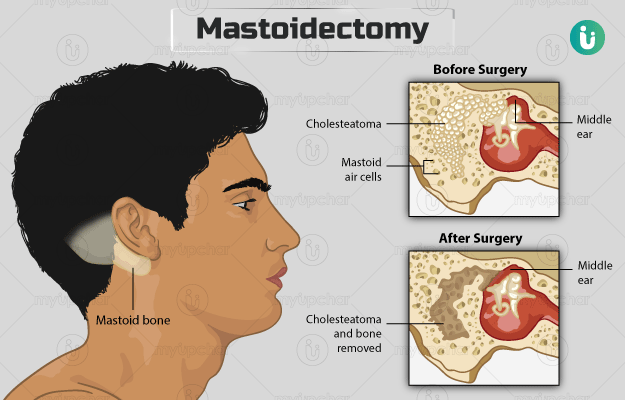Definition:
Mastoidectomy is a surgical procedure involving the removal of infected or diseased mastoid air cells located in the mastoid bone, which is part of the temporal bone of the skull situated just behind the ear. This procedure is often necessary to treat chronic ear infections, mastoiditis, and other complications that affect the mastoid bone and middle ear.
Purpose:
The primary goals of a mastoidectomy are to::
- Eliminate infection from the mastoid bone and middle ear.
- Prevent the spread of infection to nearby structures, including the brain.
- Improve hearing if it has been affected by the disease.
- Remove cholesteatoma, a noncancerous skin growth that can develop in the middle ear and mastoid.

